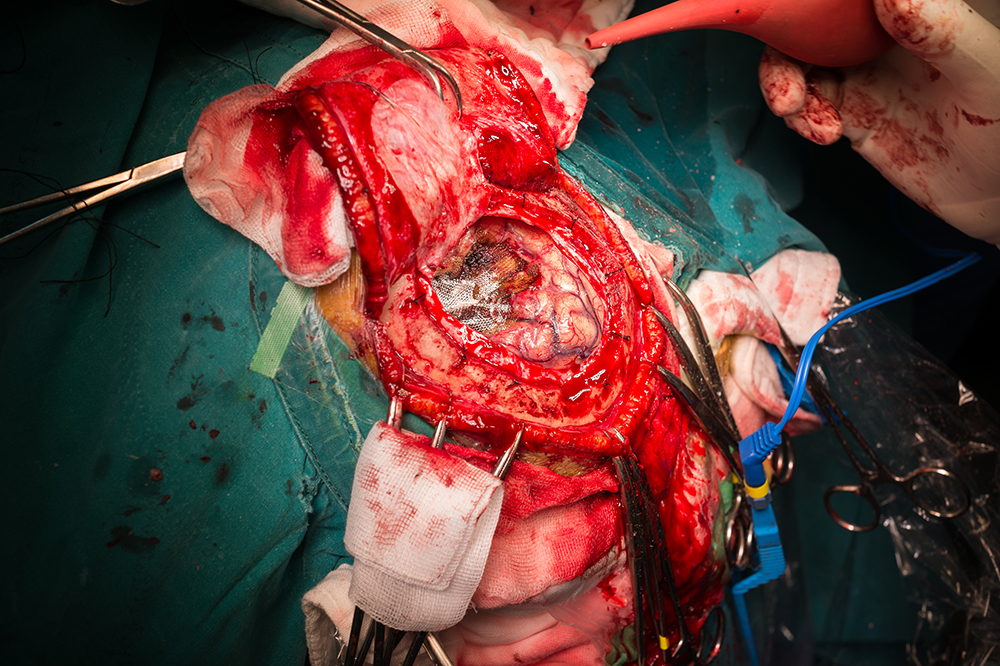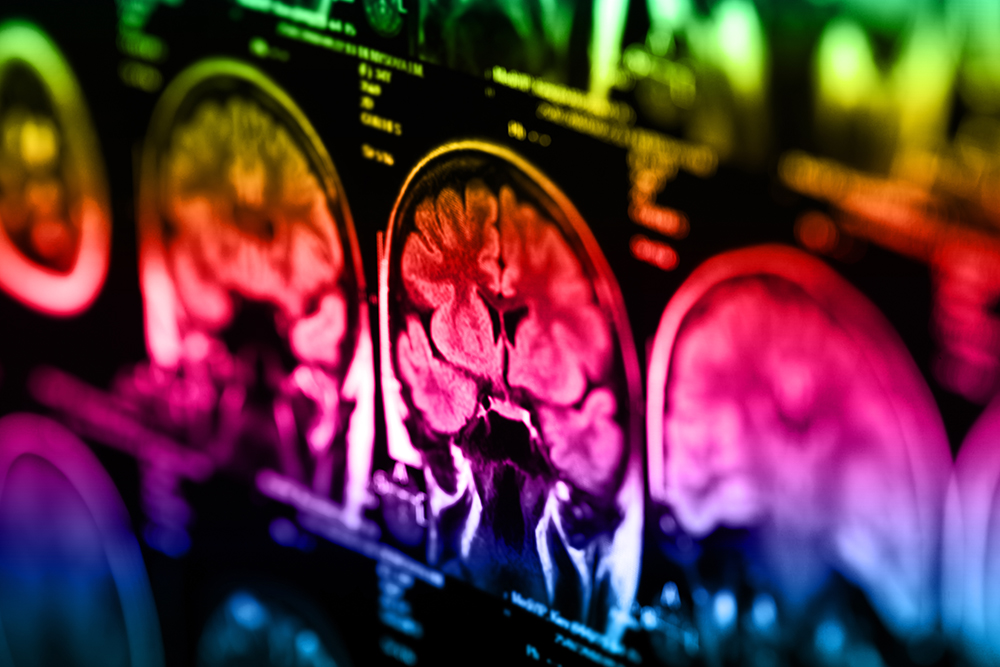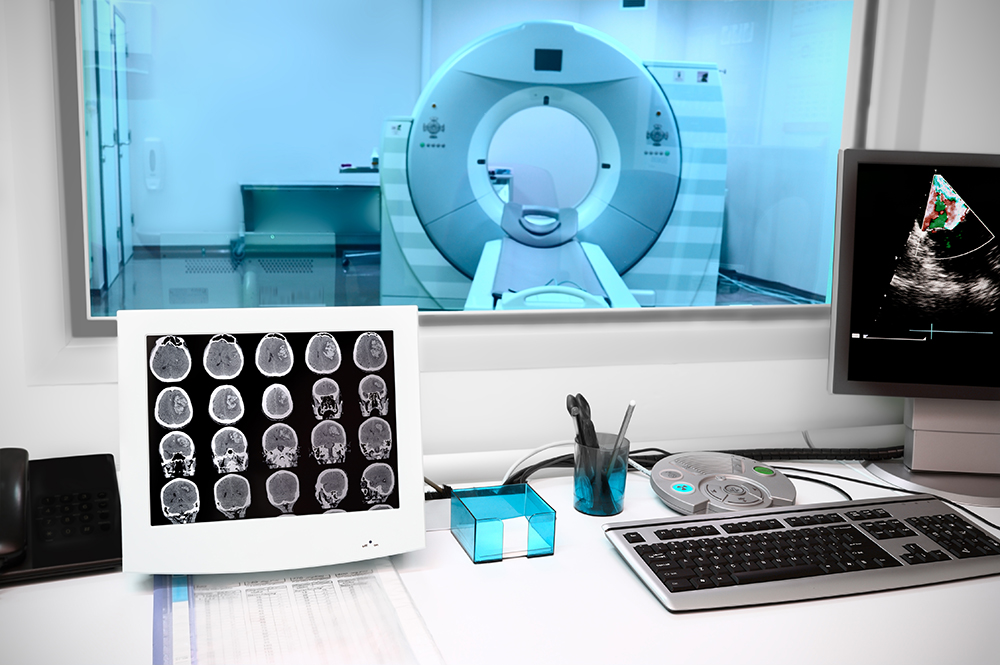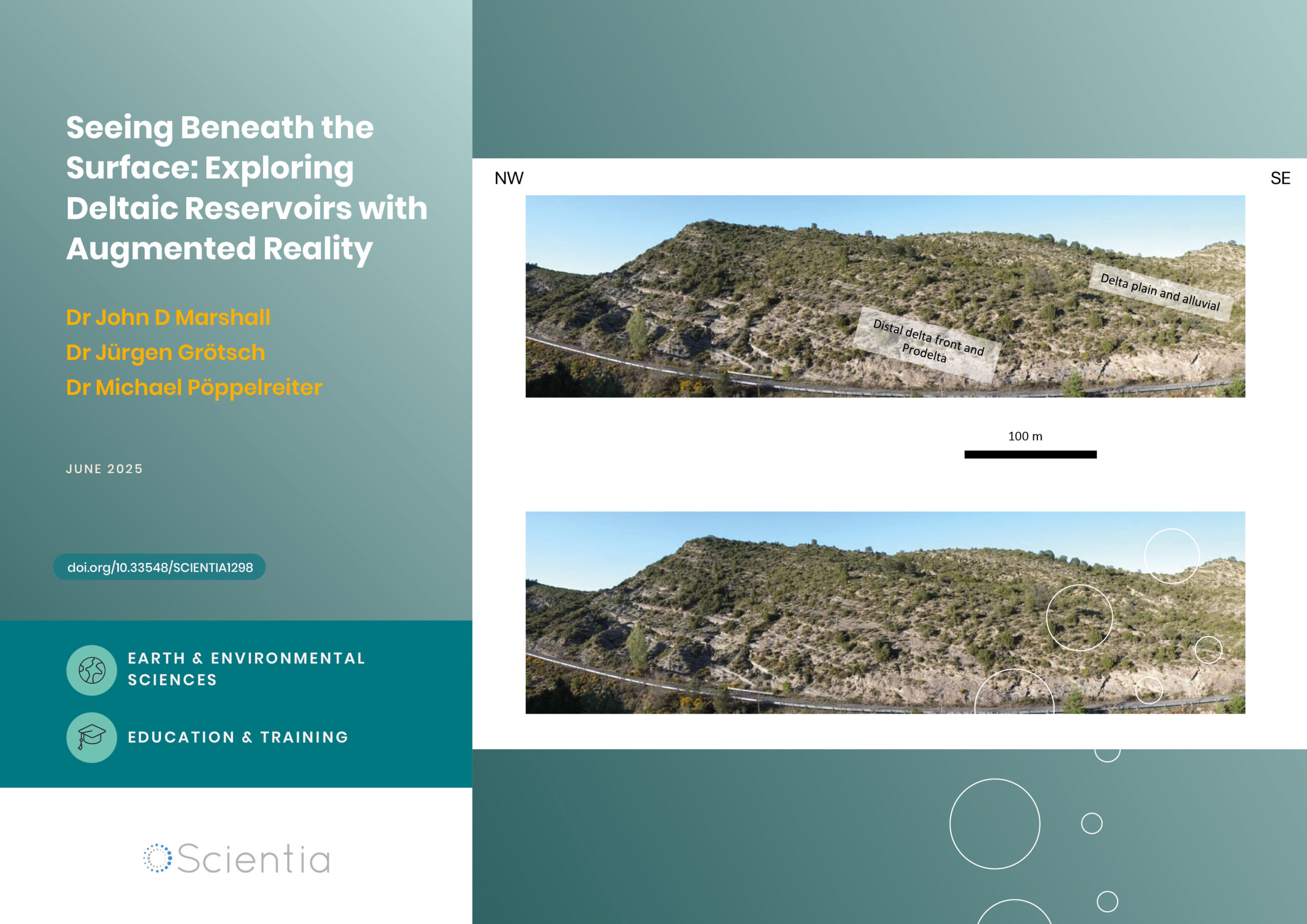Dr Sean Lawler – Overcoming the Barriers to Brain Tumour Therapy
Brain tumours and other central nervous system diseases can be exceptionally difficult to treat. This is often due to the blood-brain barrier which can pose a significant obstacle when trying to get drugs to their intended site of action. Dr Sean Lawler and his team from Brigham and Women’s Hospital, Harvard Medical School are aiming to bridge the gap between laboratory research and clinical treatment in their quest to find new ways to effectively deliver therapies to the brain and treat challenging diseases, especially the lethal brain tumour glioblastoma.
The Blood-brain Barrier: A Help and a Hindrance
Diseases of the central nervous system (CNS) and brain can be severely debilitating or deadly, and most are difficult to treat effectively. Cancers like glioblastoma present with bleak survival expectations of an average of only 15 months, and are among the most challenging tumours to treat. This is in part due to the presence of the blood-brain barrier (BBB), a shield-like border of specialised cells which surrounds all the blood vessels in the brain. The BBB allows oxygen and essential nutrients to pass from the blood to the cells of the brain but is highly selective in allowing other molecules, including many therapeutic drugs to cross.
The BBB is critical in maintaining tight control over the CNS, where the entry of pathogens, toxins, and even immune cells can be dangerous. But despite its essential role, when we want to treat diseases of the brain the BBB can hinder our efforts to deliver drugs to where they need to be by blocking their entry and actively removing them from the CNS. This means scientists have had to develop novel ways to get through, either by smuggling molecules past the BBB checkpoint in disguise or bypassing the BBB entirely and injecting drugs straight to the target.
Brain tumours come with further difficulties, arising from their ability to hide from the immune system, preventing our natural defences from taking them down. Dr Sean Lawler and his team from Brigham and Women’s Hospital, Harvard Medical School, are working to develop new ways to tackle brain tumours. They are creating models of the BBB to test new compounds and hoping to translate novel therapies from the laboratory to clinical trials.

Bridging the Gap
‘Our goal is to be able to effectively deliver therapies to the brain,’ says Dr Lawler about his work. Biomedical science is at a pivotal moment, where our ever-improving understanding of diseases is coinciding with advancements in our technological abilities, allowing exciting new avenues to open up. Dr Lawler’s work focuses on translational medicine, which is the practice of getting new therapies from the laboratory to the clinic and then using observation of patient responses to further improve and develop the concept. Dr Lawler’s team is highly collaborative, using skills of physicists, chemists, biologists and mathematicians to try to solve the riddle of effective drug delivery to the brain.
Developing a useful model of the BBB is central to progressing drug discovery before costly human trials can take place. Unfortunately, due to the extremely specialised nature of these cells, it is almost impossible to culture them in vitro and retain the unique characteristics they possess in the brain. Key proteins which modulate the passage of molecules and the tight junctions between cells are lost when the cells are grown in the laboratory, which means that testing drugs on them is not representative of what would happen in vivo.
Dr Lawler and his team have been able to create a spheroid model of the BBB which keeps many of its functions outside of the body. Co-culturing the various cells which make up the BBB causes them to self-assemble into a 3D structure by allowing them to interact with each other as they would in vivo. Dr Lawler’s model successfully reproduced functions of the natural BBB, such as the proteins and junctions, and offers a convenient way to study transport from the bloodstream to the brain. This can aid the screening of drugs, to see what kind of molecules are allowed to cross, and critically, to find novel therapeutics for brain diseases.
‘Our goal is to be able to effectively deliver therapies to the brain.’

Using Vectors to Cross the Blood-brain Barrier
Many attempts to get drugs through the BBB have focused on temporarily disrupting the barrier, either chemically or mechanically. Unfortunately, these techniques come with many limitations, including the side effect of letting toxins enter the brain, causing neurotoxicity.
A different way to overcome this challenge is to use molecular delivery vectors, called ‘BBB shuttles’. The vector acts as a vehicle to carry the drug through the cellular blockade. Often, this is achieved by attaching proteins to the drug which interact with specific receptors on the surface of the BBB cells. Many different strategies have been trialled to find the most efficient vector and recent work has shown that a process known as peptide macrocyclisation can significantly improve the uptake of the vector-drug combinations across the BBB.
Normally, proteins used in vectors are liable to be degraded quickly, reducing the amount available. Dr Lawler and his team have shown that a chemical process, known as nucleophilic aromatic substitution, can turn proteins into ring-like structures (macrocycles) which prevents them from being degraded as well as augmenting their uptake into cells and enhancing their ability to cross the BBB.
In a set of experiments, Dr Lawler used his spheroid BBB model to demonstrate that macrocycles can efficiently penetrate the brain and showed that in mice macrocycle uptake was significantly increased compared to other proteins. This research holds a huge amount of promise for the future of delivering therapeutics to the CNS, and elucidation of the exact method of transport will help scientists learn more about the BBB and how to get past it.

Boosting the Immune System
Treating brain diseases like glioblastoma doesn’t solely rely on getting chemotherapy drugs into the brain. Dr Lawler and other translational research scientists have also been looking at ways in which the immune system can be targeted to help fight tumours from within.
Since tumours are highly capable of evading the immune system, attempts have been made to ‘reactivate’ the immune response to cancer. Cancer cells can prevent the crucial interactions between immune cells necessary for T-cell activation, and a class of drugs known as immune-checkpoint inhibitors attempt to override this. Unfortunately, specific aspects of glioblastoma tumours mean that these inhibitors are less effective than in other cancers, and few patients respond as robustly as we would hope. Evidently, there is a need for better immune-related cancer therapeutics.
Dr Lawler has been studying gene-mediated cytotoxic immunotherapy (GMCI) for glioblastoma. This complex approach involves the injection of a non-replicating virus into the tumour where the virus expresses a specific gene. Upon administration of a known drug, called ganciclovir, the gene converts this into a toxic product, allowing extremely targeted chemotherapy right in the tumour itself.
On top of this, GMCI is capable of activating a strong immune response which remains at the site of the tumour and can prevent further growth. Dr Lawler wanted to find out if combining GMCI with immune-checkpoint inhibitors would enhance the activity of both treatments. In a phase 1 clinical trial using mice, he and his team demonstrated that this combination increased the number of long-term surviving animals compared to each drug acting alone. His data suggested that the treatments act synergistically, with each enhancing the activity of the other.
Going forward, Dr Lawler hopes to find out whether this combined therapy can overcome the initial resistance of glioblastoma to treatment, which is often seen in newly diagnosed cases. For now, the results provide an encouraging platform for further investigation into combined immunotherapies.

Forward Thinking
It remains clear that glioblastoma is an especially challenging cancer to treat, and progress has been incremental at best. One of the more promising areas of research which Dr Lawler is undertaking involves immune sensing molecules such as STING, or Stimulator of Interferon Genes. These immune sensors are naturally activated when a pathogen invades a cell, resulting in potent activation and recruitment of immune cells.
Researchers hope to find compounds which can boost these immune sensing pathways and response, potentially combining them with immune-checkpoint inhibitors, but as of now, the STING pathway in glioblastoma is almost entirely unknown. There are little to no data detailing expression levels of the proteins in the pathway in glioblastoma, or how this may vary between patients, and this is a major hurdle when developing therapeutics to target this pathway.
Dr Lawler is convinced of the importance of STING and other immune sensing pathways as targets for cancer treatment, and his future research aims for the full characterisation and identification of new pharmacologic agents which can target and activate them in the right way. It seems likely that targeting the STING pathway could overcome the immune suppression induced by the tumour and trigger inflammation, something which is key for immune-checkpoint inhibitors to work. Overall, the STING pathway is a hugely important candidate for finding new anti-tumour agents and enhancing the activity of already known ones. Dr Lawler and his team are currently working to develop new methods that could allow sustained drug release within the tumour to allow the proper immune response to develop.
The future of glioblastoma research will see great steps forward as our understanding of immune mechanisms in the brain and in cancer improve. Further to this, as technology advances our ability to model complicated biological structures such as the BBB will support research and drug development and hopefully speed up the time it takes for drug candidates to make it from the laboratory to the clinic. The work of Dr Lawler is just one foray into these new capabilities and incorporating all the knowledge we gain from patient observation along the way should help lead the charge toward developing new and effective therapies for glioblastoma.
Reference
https://doi.org/10.33548/SCIENTIA589
Meet the researcher

Dr Sean Edward Lawler
Associate Professor of Neurosurgery
Department of Neurosurgery
Brigham and Women’s Hospital
Harvard Medical School
Boston, MA
USA
Dr Sean Lawler is a translational brain tumour scientist from Brigham and Women’s Hospital, Harvard Medical School. He earned his doctorate from Birkbeck College, University of London in 1992 and worked on the fundamentals of signal transduction in San Francisco, Paris, Dundee and at Massachusetts General Hospital until 2004 when he joined the faculty at The Ohio State University. A stint in his hometown at the University of Leeds was followed by him joining the faculty of Harvard Medical School in 2013 where he now holds the position of Associate Professor in the Department of Neurosurgery at Brigham and Women’s Hospital. His work has focused on brain tumours with an emphasis on glioblastoma, and the use of immunotherapeutics to treat cancer. He is an Editorial Board Member of Neurooncology, a member of the American Society of Clinical Oncology, Society for Neurooncology and American Association for Cancer Research, and in 2017 he received the prestigious BWH Innovator Award.
CONTACT
E: slawler@bwh.harvard.edu
W: researchfaculty.brighamandwomens.org/BRIProfile.aspx?id=6541
KEY COLLABORATORS
Antonio Chiocca MD, PhD, Chairman of Neurosurgery, Brigham and Women’s Hospital, Boston
Brad Pentelute PhD, Professor of Chemistry, Massachusetts Institute of Technology, Boston
Charles S. Cobbs MD, Director, Ben and Catherine Ivy Center for Advanced Brain Tumor Research, Swedish Neurosciences Institute, Seattle
Charles H. Cook MD, Associate Professor of Neurosurgery, Beth Israel Deaconess Medical Center, Boston
FUNDING
Brigham and Women’s Hospital Innovator Award
B*CURED foundation
US National Cancer Institute (R01CA237063, R01CA184283)
Further Reading
SE Lawler, MC Speranza, C Passaro, et al., Preclinical investigation of combined gene-mediated cytotoxic immunotherapy and immune checkpoint blockade in glioblastoma, Neuro-Oncology, 2018, 20, 2, 225–235.
CM Fadzen, JM Wolfe, CF Cho, et al., Perfluoroarene-Based Peptide Macrocycles to Enhance Penetration Across the Blood-Brain Barrier, Journal of the American Chemical Society, 2017, 139, 44, 15628–15631.
CF Cho, JM Wolfe, CM Fadzen, et al., Blood-brain-barrier spheroids as an in vitro screening platform for brain-penetrating agents, Nature Communications, 2017, 8, 15623.

Want to republish our articles?
We encourage all formats of sharing and republishing of our articles. Whether you want to host on your website, publication or blog, we welcome this. Find out more
Creative Commons Licence
(CC BY 4.0)
This work is licensed under a Creative Commons Attribution 4.0 International License. 
What does this mean?
Share: You can copy and redistribute the material in any medium or format
Adapt: You can change, and build upon the material for any purpose, even commercially.
Credit: You must give appropriate credit, provide a link to the license, and indicate if changes were made.
More articles you may like
How Food Environments Shape Our Eating Habits
How we eat dramatically impacts our health, yet millions of Americans live in ‘food deserts’ – areas with limited access to fresh, nutritious food. Recent research reveals that solving this crisis requires looking beyond just physical access to food to understand how our entire community environment shapes our dietary choices. Through a series of pioneering studies, Dr Terrence Thomas and colleagues at North Carolina A&T State University have been investigating how different aspects of our food environment influence what we put on our plates. Their findings suggest that creating lasting change requires reimagining how communities engage with food at every level.
Probing Electron Dynamics in the Ultrafast Regime
In the atoms that make up the matter around us, negatively charged particles called electrons have properties such as spin and orbital angular momentum. Researchers at Martin Luther University Halle-Wittenberg have developed a theoretical framework which allows them to simulate the dynamics of the spin and orbital angular momentum of electrons in materials when probed with an ultrafast laser pulse. Using this framework, they are able to simulate different materials and improve our understanding of dynamics on an atomic scale.
Seeing Beneath the Surface: Exploring Deltaic Reservoirs with Augmented Reality
In the Aínsa Basin of the Spanish Pyrenees, the Mondot-1 well was drilled, cored, and fully logged to capture a detailed record of a long-buried ancient river delta system. Dr. John D. Marshall, Dr. Jürgen Grötsch, and Dr. Michael C. Pöppelreiter with co-workers at Shell International used this core to trace how sediments once flowed across the landscape, and were deposited under shifting tectonic conditions. The team employed augmented reality and interactive virtual displays; these innovative tools offer new ways to explore subsurface depositional systems, and are particularly useful in locations where physical access to the core is difficult, or no longer possible.
Dr Jim Wu | Ziresovir Offers New Hope for Treating Respiratory Syncytial Virus Infections
Respiratory syncytial virus (RSV) causes respiratory tract infections in children and adults. While for many patients the outcomes of infection are mild, for others, infection can prove fatal, and there is a lack of effective treatments. Dr Jim Wu from the Shanghai Ark Biopharmaceutical Company in China carries out his vital research to develop new, safe, and effective treatments to tackle this killer.




